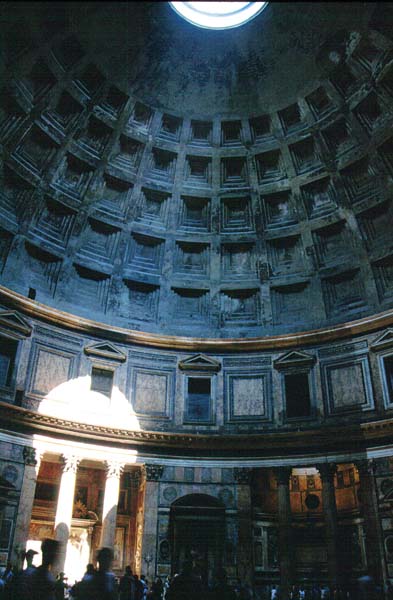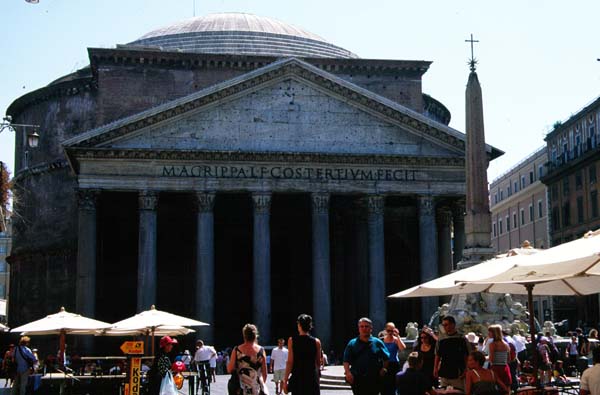The first time I saw the Pantheon, it seemed huge. The roof high above me with the light coming in lines was incredible as I had not yet seen such an incredible structure. When I went on the eleventh grade field week I saw it from the outside and even though I have grown I am still amazed at its beauty and size. This building is "a shrine to all gods" so therefore it is normally expected that it would be such a magnificent building.

A little about the architecture
The Pantheon is a large structure which is devoted to the worship of the Roman deities therefore the design is made such that it seems as large as possible. This is done by using three basic shapes. The cube, the triangle, and the circle. Looking at the structure you see how this is done. Looking at the picture below you notice that the front is square with columns. Looking up you see a portico with the words "M[arcus] VIPSANIUS L[ucii] F[ilii] AGRIPPA CO[nsuli]S TERTIUM FECIT
".Behind this rectangular entrance is a round building which is the main part of the Pantheon. As you step into this room there are statues of the different gods all around you and the building is larger than you would have expected looking at it from the outside. As a source of light there is an oculus through which water and light enter the Pantheon through.

